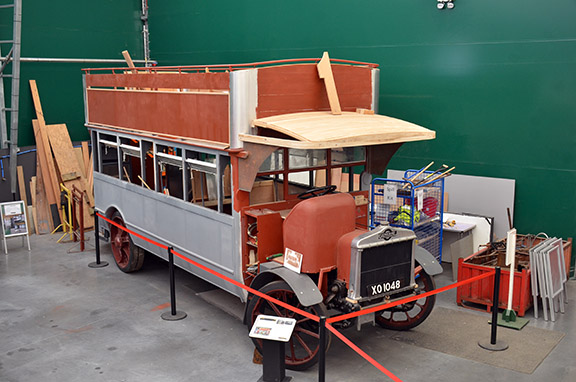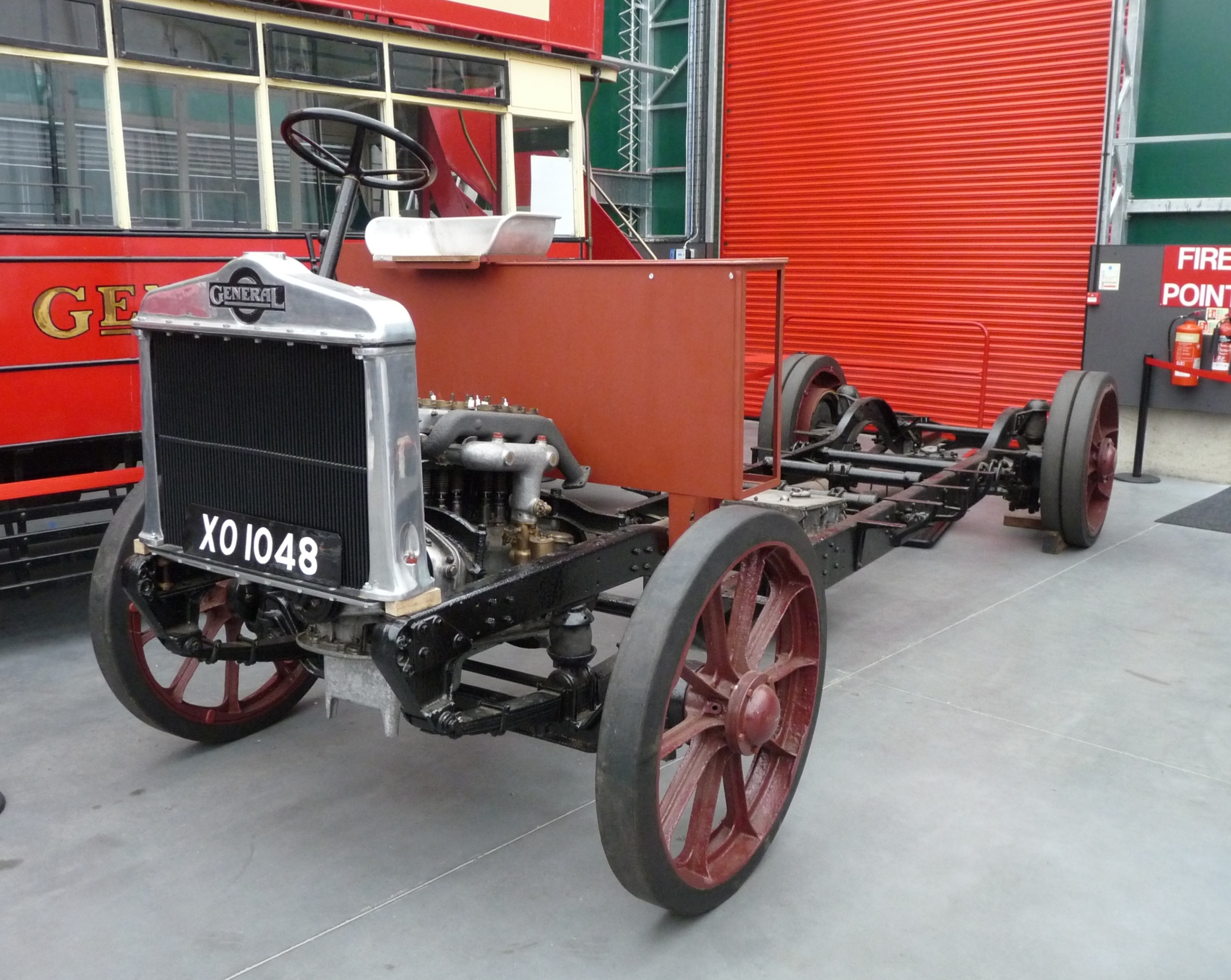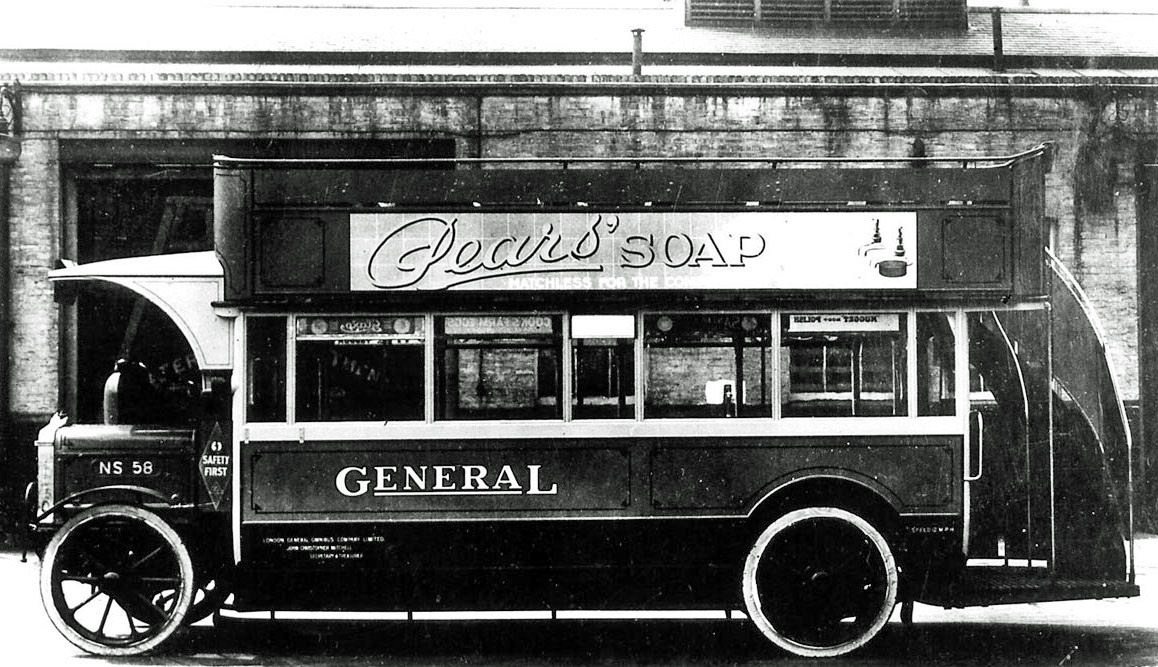NS174 (XO 1048) : new in 1923
-
- Chassis : AEC NS – chassis no. 22323
- Engine : A118 5.1 litre 4 cyl. 35hp side-valve petrol
- Gearbox : 3-speed chain
- Body : LGOC, Brush & Short Bros built the first 850 bodies
- Vehicle Classification: NS – possibly stood for ‘Nulli Secundus’, Latin for ‘second to none’ although this has never been confirmed
Withdrawn : unknown but probably 1934 (11 years)
Acquired by Museum : 2003
Status : undergoing complete restoration and on display in the Museum




The NS-type represented a major step forward during the rapid development of the London bus in the inter-war years. This bus type was the first to be designed to have a covered top - the high-floor of earlier types meant that the height-to-width ratio precluded the fitting of a roof as the centre of gravity would have been too high. The drop-frame chassis of the NS allowed a low, single-step entry onto the platform of the bus. Despite this significant advance in design, the conservative attitude of the licensing authorities in London meant that covered-top bodies continued to be precluded for a further three years so that all the early NS-types had to be built with their top decks exposed to the elements.
The NS-type was a great success to the extent that over 2,400 were built and the last were not withdrawn from London Transport service until late 1937. Those open-toppers that survived longest were eventually fitted with roofs.
Little history has so far been uncovered for NS 174, but it is known that it entered service in 1923 at Hammersmith garage for use on route 11.
In those days, the licensing authorities required a London bus to be fully overhauled every 12 months and, in order to streamline this vast task as much as possible, the London General Omnibus Company (LGOC) swapped vehicle identities freely so that, as one bus entered the works for overhaul, another might leave with the identity (registration number and stock number) of the incoming bus. In addition, bus bodies and chassis were frequently inter-changed at overhaul, so the researcher's task of tracking the history of one individual chassis/body combination is a daunting one!
The Museum was fortunate to be able to acquire the surviving remains (three chassis and one body) of several NS-types and, from these remains, it is reconstructing the bus in the form it entered service, ie with solid tyres, open top and its original 1923 identity as 'NS 174'.
The chassis and mechanical parts have already been fully restored and work is advanced on re-building the body. Most of the old body was rotten beyond salvation but, wherever possible, parts will be re-used. Other parts can at least provide templates for the construction of new ones.
Our NS is one of only two known survivors of this important type of London bus and the only one in its original form on solid tyres and with an open top.
top:
- NS174 with body-shell substantially complete - July 2021 [David Harman]
left from top
- The reconditioned NS chassis awaits its rebuilt body - 2011 [Michael Wickham]
- NS174 before restoration began - 2003 [Michael Wickham]
- What NS 174 will look like when restoration is complete

Comment(1)
Bond says:
April 18, 2023 at 6:56 pmThe A.E.C. ‘chain’ gearbox was one of the first attempts at easing the driver’s lot by the use of ‘dog’ clutches within the gearbox. The gears would then be permanently in mesh and the ‘dog’ clutches moved in and out of the centre of the gear themselves. The improvement was introduced with the K type of 1919 for second gear (there were only three gears). The next step was to do away with the chains and that led to the gearbox that was deveoped and put into production for the Regent, Regal and Renown series (ST, T & LT classes). I am led to believe that a number of experiments were carried out with an improved gearbox on certain vehicles of the NS type. This reverted to the system whereby the gears themselves were slid in and out of mesh. Because of the difficulty in handling for the driver, this gearbox was pretty quickly superseded by one with constant mesh engagement of third gear which made the driver’s lot considerably easier and led to a much longer gearbox life as a bonus. The earlier gearbox (by now 4 speed) was given the type code D119 and the later design with constant mesh 3rd was the D124. The latter was in production and standard in almost all A.E.C. production of buses and lorries until about 1953, such was its reliability. Many other A.E.C. Buses had various forms of pre-selective, epicyclic gearboxes which were basically the same as the gearbox in the Model ‘T’ Ford. The earlier examples were given the designation D128 but that was superseded by an improved version which was given the code D132 and STL 441 has such a gearbox. Among the examples of the D124 gearbox in the L.B.M. collection are those in T 31 and ST 922 but I am not aware of any surviving D119s.
I have a question regarding NS 174 – is it still possible to acquire new solid tyres to suit the vehicle ? My late grandfather used to drive the ‘B’ type prior to the first world war and he said that the lack of tread on the sold tyres could cause problems on wet road surfaces.